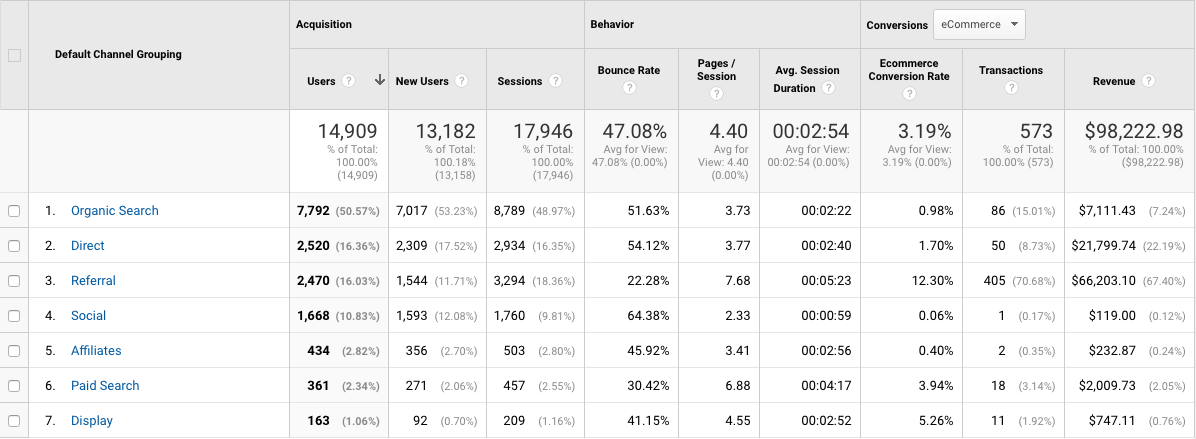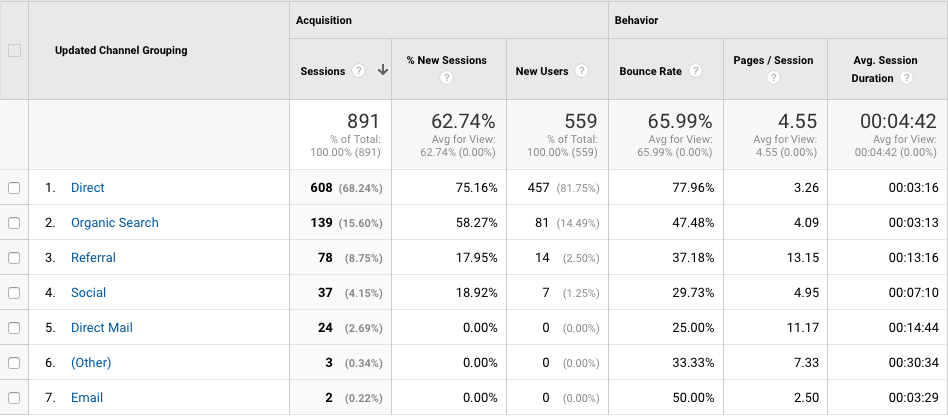
At a time when nearly half of marketers say that connecting digital and physical customer experiences is "selective at best”, tying online marketing to offline actions such as in-store visits and sales remains something of a measurement Holy Grail. In the quest for better online to offline measurement, we might also want to improve how we look at things from the other end of the lens.
Offline to online attribution – how to give credit to ‘traditional’ promotion methods like print and direct mail for driving website traffic and sales – has been dogged by measurement problems since the dawn of e-commerce itself.
Back then, the ‘Direct’ channel in our Google Analytics reports was all we needed: if people were typing our URL into their browser they must have seen it printed on something, so that was good enough. It didn’t tell us which channels were working, so we turned to ‘marketing’ URLs, little branded shortcuts that could be associated with specific campaigns, but they couldn’t give us any granularity. We even resorted to mail order tactics, asking visitors to quote different codes –although there was no real incentive to use these unless a discount was being offered. Finding the right compromise between getting the data we needed for accurate attribution of offline marketing and making it easy for the user was – and still is – a major challenge.
In online marketing, there are no such problems. Every click on every link to your website –whether from a search engine, an ad, an email, or a social network – can be tracked. Just look at any Google Analytics acquisition channels report for proof.

The key to obtaining this kind of data are campaign parameters (UTM tags in Google Analytics). When a visitor clicks a referring link, the parameters you add to the destination URL are sent to Google Analytics, and the related data is then available in reports. When used in conjunction with goal tracking and attribution modelling, they can tell you which channels and campaign are most effective at driving visits, engagement, and revenue. They look a bit like this:
https://www.example.com/?utm_source=summermailer&utm_medium=email&utm_campaign=summersale
Unfortunately, URLs link this are simply not a viable option for offline promotions as they are so long. No one would ever type a URL like the one above into a web browser. They can be obfuscated using a campaign URL or shortening service, but there’s still no guarantee people won’t enter just the domain of the former or be put off by the latter. And they still need to type something in.
Finally, we can solve this problem.
Our simple platform transforms physical things – manufactured or printed, existing or new – into opportunities for mobile engagement. Using tap, scan, and nearby technologies that can be added to any physical object, recipients are instantly connected with digital content, services, and experiences via their smartphones. And because they just tap or scan the object they don’t need to type a thing, meaning that we can pass those all-important campaign parameters into your Google Analytics account, telling you how many website visits those physical things generated, what kind of behaviour they drove, and –crucially for e-commerce sites –how many sales and how much revenue they generated.
So now your Google Analytics reports can look something like this:

Note the new channel called "Direct Mail”. These are the mobile visits driven by customers interacting with printed direct mail campaigns using our technology. Drill down further and we can even show you whether those interactions were driven by tapping (NFC) or scanning (QR).

Other campaign parameters built in to our platform tell you which campaigns and landing pages drove the visits, engagement, and revenue.
Just imagine the difference this could make to your next direct mail campaign.
Let’s say you send 50,000 mailings out with our technology built in. Our platform can tell youin real time how many of those recipients interacted with those assets via their mobile phones (in our experience, interaction rates of up to 15% are not uncommon), but more importantly it now tells you how those interactions converted into value on your website – whether that’s in the form of the number of downloads and registrations, or sales and revenue – just as you can with online channels.
By building this into your channel definitions and attribution models, even if someone visits your site from a direct mail campaign then comes back again via search or social media you can still assign credit to them all.
So, whilst everyone else is worrying about online to offline attribution, maybe it’s a good time to take another look at how you measure the online impact of offline marketing.

